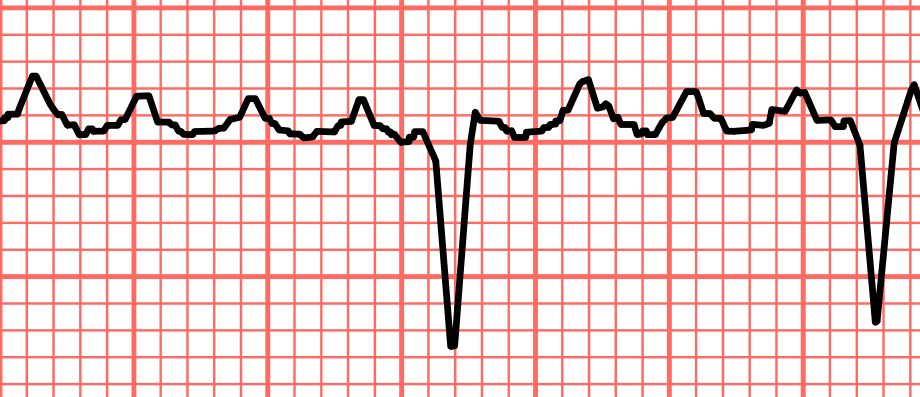Contents
Atrial flutter
Atrial flutter is a heart rhythm disorder. An electrocardiogram is used to make the diagnosis. The treatment aims to regulate the arrhythmia and to treat the pathology responsible for atrial flutter.
Atrial flutter, what is it?
Definition
Atrial flutter is a heart rhythm disorder characterized by coordinated and regular contractions of the atria at too rapid a rate.
Atrial flutter, like atrial fibrillation, is due to impairment of the electrical activity of the atria of the heart. An electrical impulse becomes trapped in a circle of tissue in the right atrium and loops in this circuit at a rate of 300 beats per minute.
Flutter can be permanent or manifest as a seizure.
Both of these arrhythmias increase the risk of stroke and can lead to heart failure.
Atrial flutter can develop into atrial fibrillation. Conversely, many people with atrial flutter have episodes of atrial fibrillation.
Causes
The causes of atrial flutter are the same as those of atrial fibrillation. These arrhythmias are often caused by coronary artery disease, congenital heart disease, heart valve disease, or high blood pressure. The latter two cause the atria to dilate which increases the risk of atrial flutter or atrial fibrillation.
In 25% of cases, no cause is found. This is called idiopathic atrial flutter.
Diagnostic
The diagnosis of atrial flutter is like that of atrial fibrillation on an electrocardiogram (ECG). Atrial flutter is recognized (in its typical form) on the ECG by a characteristic deformation of the atrial “sawtooth” waves. An echocardiogram is performed to detect any associated heart disease. Other exams may be done to find the cause of the flutter: chest x-ray, coronary artery CT scan, MRI, blood tests.
The people concerned
Atrial flutter is a frequent heart rhythm disorder, especially in people over 60 years old: it accounts for 60 to 65% of atrial tachycardias in adults (excluding atrial fibrillation). The prevalence of atrial flutter is approximately 1% of those over 80 years of age.
Risk factors
Atrial flutter occurs more frequently in men, often with high blood pressure, coronary artery disease, mitral valve disease, sinoatrial disease, chronic lung disease, or a history of cardiac surgery.
Symptoms of atrial flutter
A person may not experience symptoms when their heart rate changes from a normal rhythm to atrial flutter.
Atrial flutter, on the other hand, can be signaled by different signs.
First sign: palpitations
In half of the cases, the person experiences palpitations (heart rate between 100 and 150 beats per minute), which may vary in duration or be permanent.
Fatigue and exertion intolerance
Atrial flutter can be signaled by a feeling of fatigue and weakness during exertion and at rest.
Dyspnea (shortness of breath)
Dyspne reflects heart failure.
Pain in the chest
Atrial flutter can cause chest pain, sometimes dizziness and / or lightheadedness.
Treatment of aricular flutter
The treatment of flutter consists first of all in the management of the causal pathology: heart disease, hyperthyroidism.
The symptomatic treatment of atrial flutter has several objectives: slowing down the heart rate, preventing complications (especially stroke), allowing the heart to regain a normal rhythm, and keeping the heart at a normal rhythm.
To slow the heart rate, drugs are administered intravenously or orally (beta blockers, calcium channel blockers, Digoxin).
Complications are prevented by taking blood thinners or aspirin. Anticoagulants are continued for the long term because the arrhythmia can recur without the person suffering from it being aware of it, with a risk of stroke.
The heart rate is regulated with drugs, external electric shock or radiofrequency ablation. Radiofrequency ablation is the only curative treatment for atrial flutter, which most often recurs after pharmacological treatment.
Medicines help keep the heart at a normal rate.
Prevent atrial flutter
Atrial flutter can be prevented in some cases by avoiding certain risk factors such as high blood pressure.
In chronic or recurrent atrial flutter, long-term anticoagulation is necessary to prevent stroke.










